| What
the Trial Consisted of The trial would consist of
100,000 miles of compressed driving in all sorts
of conditions. The six cars would be expected to
travel the equivalent of 12 years average family
motoring in just nine months. To make the test
fair and impartial, the cars were selected and
observed throughout the test by the Royal
Automobile Club (RAC). The RAC would supervise
every aspect of the running and carry out the
final strip down, inspections and measurements of
wear. The sumps, and cylinder heads of the
engines were sealed by the RAC prior to the
commencement of the trial. It was also a
condition of the trial that if any engine parts
dependent upon the efficiency of the lubricant,
required repair or replacement at any time, the
that car would be disqualified from the total
trial.

The
Beginning of the Trial
The trial began on
the 26th April 1961, when the RAC representatives
started visiting car showrooms in search of new
cars. On that first day they selected a Morris
Mini Minor, a Ford Anglia and a Vauxhall Velox.
Six days later the RAC bought a Triumph Herald,
3.8 litre Mark 2 Jaguar, and finally on the 26th
May, a Hillman Minx (purchased after the other
cars had started the trial). Each car was a
standard production line model, with the
supplying showrooms having no knowledge of why
the cars had been bought.
The Ford Anglia
chosen was a new 1961, 997cc, deluxe model,
registration number 292 DNM, chassis / engine
number 105E 318774. It was purchased from the
showrooms of Luton Motor Company, 326/340
Dunstable Road, Luton, with an initial odometer
reading of 91 miles.
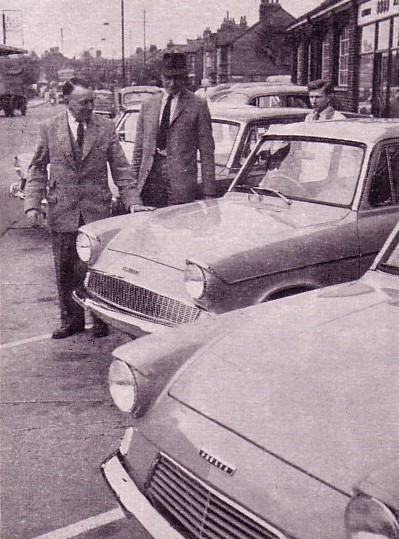
Looking at Ford
Anglia’s on the Forecourt

The cars were
taken to the BP Halfway Garage at Luton, where
the engines were sealed by the RAC, and the
existing oil was drained and replaced with BP
“Visco-static” Motor Oil. Special Helda
Pilots (mileage instruments calibrated to be
99.5% accurate) were fitted. The refuelling,
servicing, repairs and “top-ups” on all
of the cars would be supervised by the RAC and
undertaken by Halfway Garage. Any servicing,
where practicable, would be undertaken at the
normal manufacturer’s service intervals.
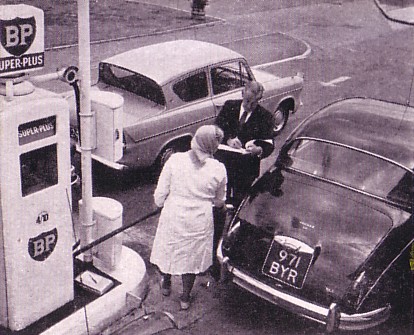
Filling up at the
Petrol Station under RAC Supervision

The Start
of the Driving Trial
On 1st May, five
of the six cars were rolled out onto the M1 to
start the first day of their nine-month trial.
The Anglia’s odometer reading at the start
of the test was 156 miles. On that first day the
Anglia clocked up another 415 miles.
The
cars were on the road by 7am every morning, with
two drivers per car working in shifts. The cars
were driven all day with just the normal meal
breaks for the drivers. During the summer, the
cars were driven for up to 15 hours a day, and in
the winter they were driven to 9pm at night
(where practicable) and for six days a week.
Most of the miles
were undertaken on the M1 motorway, where the
miles could be clocked up safely and quickly. By
25th May, the Anglia had already clocked up
10,000 test miles, and by the end of June,
another 10,000 miles
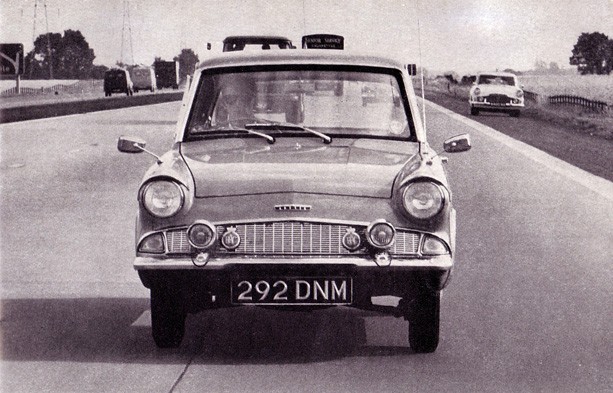
The Ford Anglia
clocking up miles on the Motorway

Part of the trial
also consisted of the cars tackling town and
country roads (you must remember that in 1961,
there were hardly any motorways in the UK. Once
off the M1 the cars would be back on roads that
were still evolving from before the Second World
War.) This part of the trial more consistently
represented where the average family would be
using their vehicle and the type of conditions
they would be tackling daily. The trial also
included one week in the Lake District of
Cumberland.
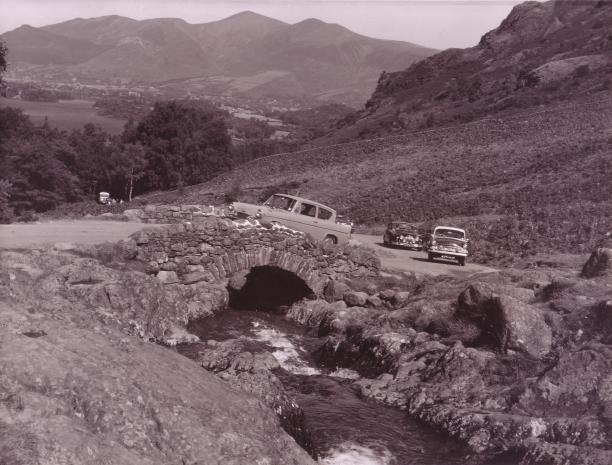

By November the
25th, the Anglia had clocked up 90,000 miles. By
now though, the weather had deteriorated badly,
making the last 10,000 miles tricky for the cars
and drivers, but by January all six cars,
including the Ford Anglia had made it; 100,000
miles in nine months. The final mileage for the
Ford Anglia was 101,495.


The
Results of the Trial
Now it was time to
see if the oil had done what the trial was asking
of it. The cars were taken to the BP Research
Centre at Sunbury-on-Thames, where the engineers
were stripped down under strict RAC supervision
and accurate measurements taken for wear of all
of the relevant parts.
The relevant
manufacturers were invited to inspect the car
engines and comment on them, after all of the
measurements had been taken.
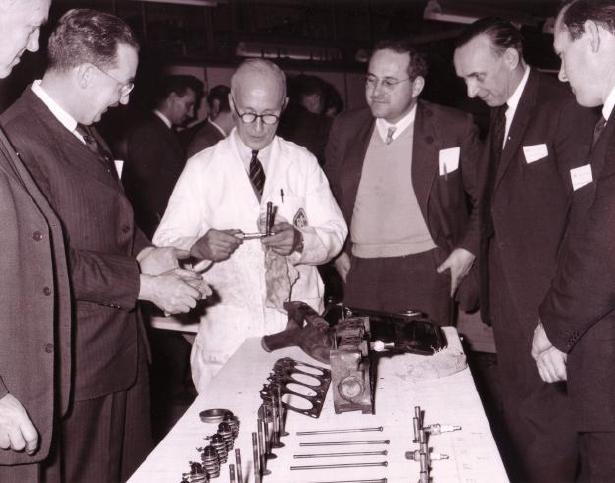
Ford Engineers
inspecting the Anglia's Engine Components

The RAC published
their reports for each car, with the Ford Anglia
one being RAC “Report on Trial No 833”
which could be requested from the RAC. The
summary report consisted of an A3 size document
that folded out to reveal four A3 pages of
information. You could also request a copy of a
brief case history of the Anglia that described
each service interval and what things had had to
be done to the car over the length of the trial.
A table of
published averages for the Ford Anglia are shown
below:

|

